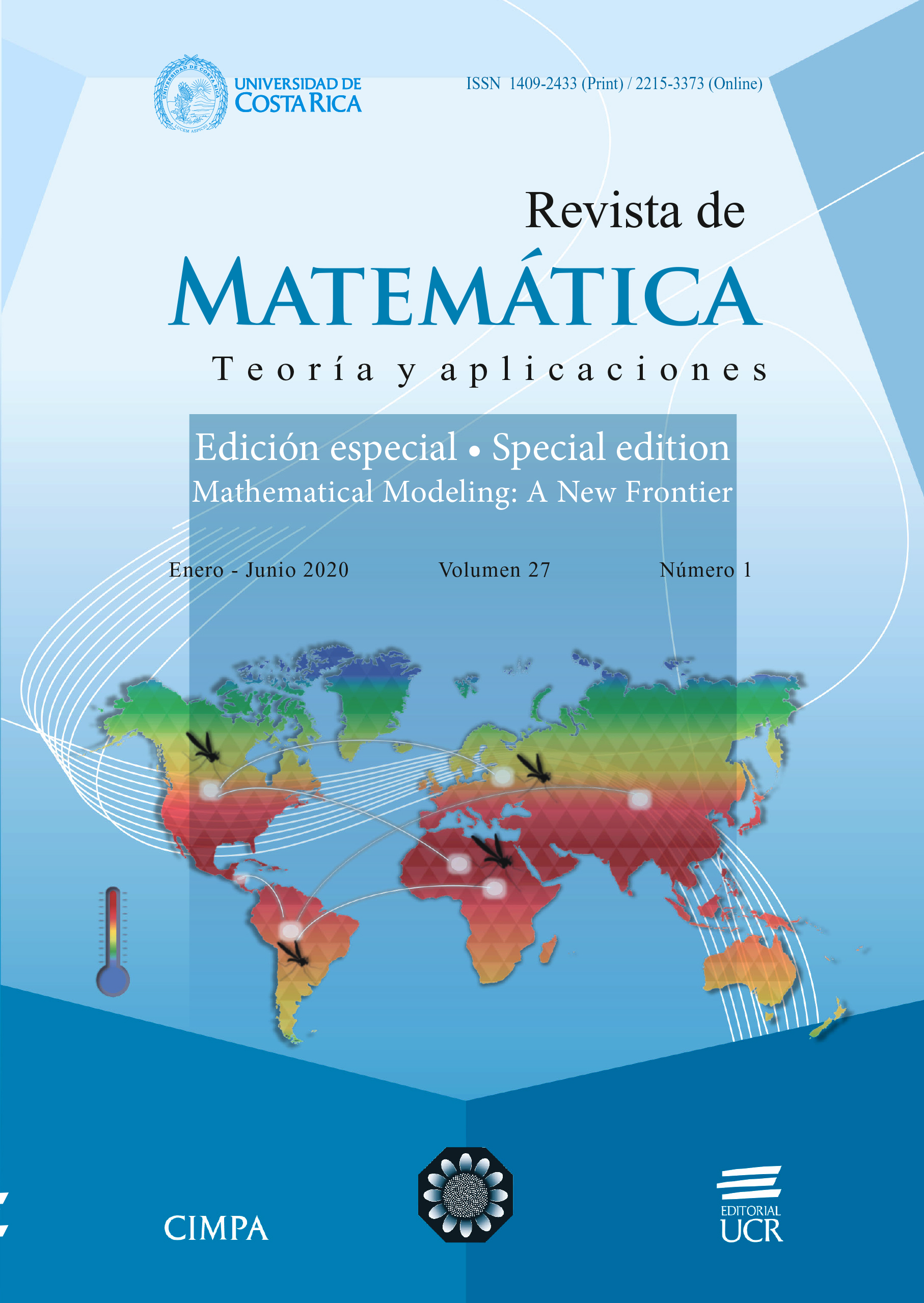Resumen
Las infecciones bacterianas provocan respuestas inmunitarias, incluyendo neutrófilos, cuyo reclutamiento es estimulado por la presencia de la bacteria pero que muere después de eliminar esas bacterias. Esta doble interacción entre las concentraciones de bacterias y neutrófilos, más complicada que la simple relación depredador-presa que describe las interacciones entre bacterias y macrófagos, crea un ambiente en el que los neutrófilos tal vez sólo puedan despejar infecciones suficientemente pequeñas. Este estudio describe esta relación utilizando un sistema dinámico no lineal sencillo que exhibe un comportamiento de biestabilidad conocido como una bifurcación hacia atrás. El crecimiento bacteriano se supone limitado por un nutriente clave. En contraste con un estudio anterior que mantuvo los niveles de neutrófilos y nutrientes constantes y requería términos de saturación para producir la biestabilidad, nuestro modelo muestra que los términos bilineales sencillos fomentan la biestabilidad cuando las densidades de nutrientes y neutrófilos pueden variar en respuesta a la densidad bacteriana. Un ejemplo aplicado a la bacteria Borrelia burgdorferi, que se alimenta de manganeso, ilustra por qué la respuesta rápida de los neutrófilos es clave para su capacidad de contener las infecciones bacterianas.
Citas
R. Antia, J.C. Koella, A model of non-specific immunity, Journal of Theoretical Biology 168(1994), no. 2, 141–150. doi: 10.1006/jtbi.1994.1094
M.G. Baker, C.D. Simpson, B. Stover, L. Sheppard, H. Checkoway, B.A. Racette, N.S. Seixas, Blood manganese as an exposure biomarker: state of the evidence, Journal of Occupational and Environmental Hygiene 11(2014), no. 4, 210–217. doi: 10.1080/15459624.2013.852280
V. Bane, M. Lehane, M. Dikshit, A. O’Riordan, A. Furey, Tetrodotoxin: chemistry, toxicity, source, distribution and detection, Toxins 6(2014), no. 2, 693–755. doi: 10.3390/toxins6020693
A. Carter, A. Toja, O. Olawoyin, J. Gonzalez, J. Grover, H. Kojouharov, C.Kribs Zaleta, A theoretical model of coinfection dynamics: modeling competition dynamics between Borrelia burgdorferi and Anaplasma phagocytophilum within a human host, Mathematics Department, Preprint Series 2014-06, University of Texas at Arlington, 2014.
V.G. Daniels, P.R. Wheater, H.G. Burkitt, Functional histology: A text and colour atlas, Churchill Livingstone, Edinburgh, 1979.
A.N. Datar, N. Kaur, S. Patel, D.F. Luecke, E. Sapi, In vitro effectiveness of samento and banderol herbal extracts on the different morphological forms of Borrelia burgdorferi, Ph.D. Thesis, Univ. of New Haven, West Haven CT, 2010.
H. Drakesmith, A.M. Prentice, Hepcidin and the iron-infection axis, Science 338(2012), no. 6108, 768–772. doi: 10.1126/science.1224577
L. Geggel, How much blood is in the human body, LiveScience, 2016. Available at https://www.livescience.com/32213-how-much-blood-is-in-the-human-body.html
R.B. Jain, Y.S. Choi, Normal reference ranges for and variability in the levels of blood manganese and selenium by gender, age, and race/ethnicity for general U.S. population, Journal of Trace Elements in Medicine and Biology 30(2015), 142–152. doi: 10.1016/j.jtemb.2014.12.004
Y. Li, A. Karlin, J.D. Loike, S.C. Silverstein, A critical concentration of neutrophils is required for effective bacterial killing in suspension, Proceedings of the National Academy of Sciences of the United States of America 99(2002), no. 12, 8289–8294. doi: 10.1073/pnas.122244799
R. Malka, V. Rom-Kedar, Bacteria-phagocyte dynamics, axiomatic modelling and mass-action kinetics, Mathematical Biosciences and Engineering 8(2011), no. 2, 475–502. doi: 10.3934/mbe.2011.8.475
R. Malka, E. Shochat, V. Rom-Kedar, Bistability and bacterial infections, PLoS ONE 5(2010), no. 5, 1–10. doi: 10.1371/journal.pone.0010010
R. Malka, B. Wolach, R. Gavrieli, E. Shochat, V. Rom-Kedar, Evidence for bistable bacteria-neutrophil interaction and its clinical implications, Journal of Clinical Investigation 122(2012), no. 8, 3002–3011. doi: 10.1172/JCI59832
H. Mayer, K. S. Zaenker, U. an der Heiden, A basic mathematical model of the immune response, Chaos: An Interdisciplinary Journal of Nonlinear Science 5(1995), no. 1, 155–161. doi: 10.1063/1.166098
M.J. Niemiec, B. De Samber, J. Garrevoet, E. Vergucht, B. Vekemans, R. De Rycke, E. Björn, L. Sandblad, G. Wellenreuther, G. Falkenberg, P. Cloetens, L. Vincze, C.F. Urban, Trace element landscape of resting and activated human neutrophils on sub-micrometer level, Metallomics 7(2015), no. 6, 996–1010. doi: 10.1039/c4mt00346b
G. Petschenka, A. A. Agrawal, Milkweed butterfly resistance to plant toxins is linked to sequestration, not coping with a toxic diet, Proceedings of the Royal Society B 282(2015), no. 1818: 20151865, 1–9. doi: 10.1098/ rspb.2015.1865
S.S. Pilyugin, R. Antia, Modeling immune responses with handling time, Bulletin of Mathematical Biology 62(2000), no. 5, 869–890. doi: 10.1006/bulm.2000.0181
J.E. Posey, F.C. Gherardini, Lack of a role for iron in the Lyme disease pathogen, Science 288(2000), no. 5471, 1651–1653. doi: 10.1126/science.288.5471.1651
A.B. Santamaria, Manganese exposure, essentiality & toxicity, Indian Journal of Medical Research 128(2008), no. 4, 484–500.
S.C. Silverstein, R. Rabadan, How many neutrophils are enough (redux, redux)?, Journal of Clinical Investigation 122(2012), no. 8, 2776–2779. doi: 10.1172/JCI63939
A M. Smith, J.A. McCullers, F.R. Adler, Mathematical model of a threestage innate immune response to a pneumococcal lung infection, Journal of Theoretical Biology 276(2011), no. 1, 106–116. doi: 10.1016/j. jtbi.2011.01.052
T. Tak, K. Tesselaar, J. Pillay, J.A. Borghans, L. Koenderman, What’s your age again? Determination of human neutrophil half-lives revisited, Journal of Leukocyte Biology 94(2013), no. 4, 595–601. doi: 10.1189/jlb.1112571
B. Troxell, M. Ye, Y. Yang, S.E. Carrasco, Y. Lou, X. F. Yang, Manganese and zinc regulate virulence determinants in Borrelia burgdorferi, Infection and Immunity 81(2013), no. 8, 2743–2752. doi: 10.1128/IAI.00507-13
J.R. Zhang, S.J. Norris, Kinetics and in vivo induction of genetic variation of vlsE in Borrelia burgdorferi, Infection and Immunity 66(1998), no. 8, 3689–3697

